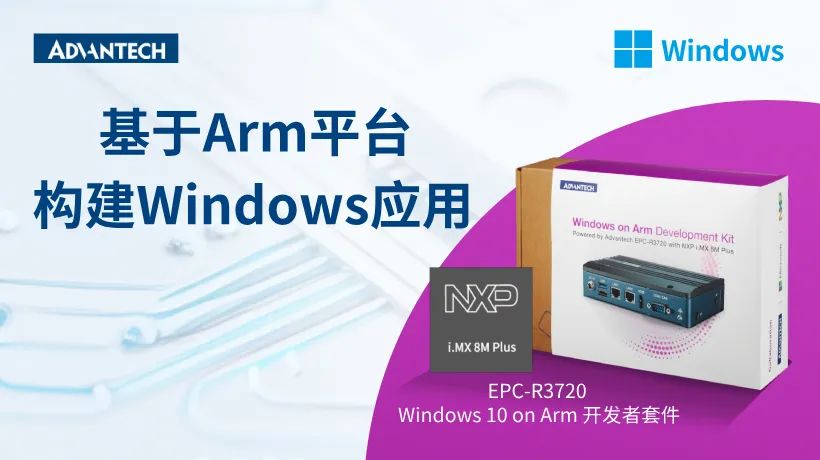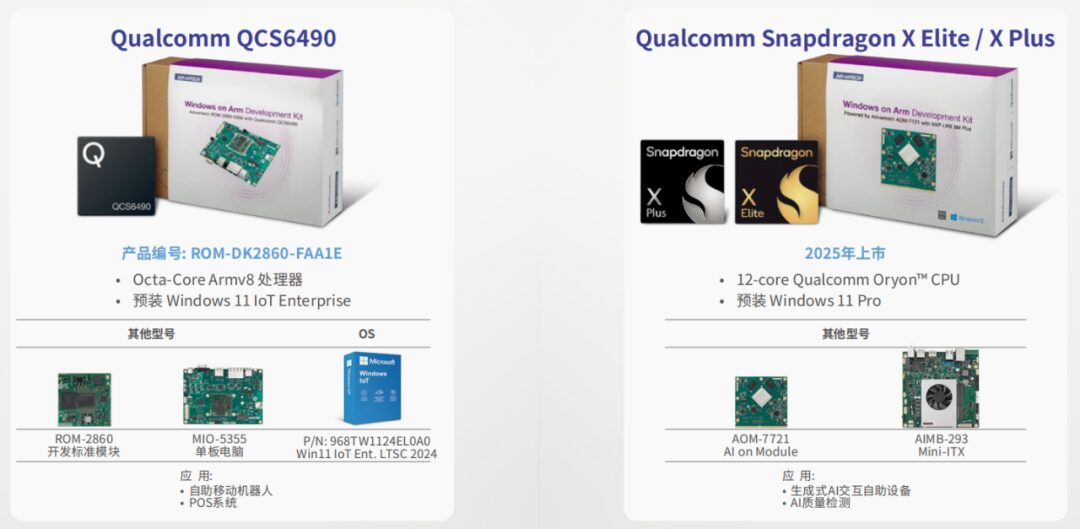Introduction
In critical fields such as industrial automation and healthcare, the Windows system has become mainstream due to its wide foundational support. For developinglow-power, cost-effective edge computing devices, Windows on Arm has become a superior choice. It combines the powerful capabilities of Windows with the low-power advantages of the Arm architecture, providing an efficient computing platform for edge applications, significantly reducing energy consumption and costs while maintaining performance.

When choosing an operating system, developers typically consider the richness of software and libraries, the maturity of development tools, and the completeness of the ecosystem. Windows is favored for itsrich software resources, mature development environment (such as tools and APIs like Visual Studio and .NET framework) and support for various programming languages. Additionally, Windows users can easily access Microsoft Azure services to quickly implement complex functionalities.
Linux also has some advantages, but its configuration and maintenance are relatively complex, and differences between distributions may pose challenges for development. While real-time operating systems (RTOS) emphasize efficiency, they fall short compared to Windows and Linux in advanced features such as graphical user interfaces and ecosystems.
In summary, if developers seek a comprehensive, secure, and mature development ecosystem operating system, Windows is an ideal choice.
The Windows operating system has expanded from traditional x86 architecture to the Arm processor platform, bringing new design potential for software development. The main advantages of Windows on Arm lie in its excellent performance, especially in terms of power consumption, making it very suitable for embedded IoT edge applications. Additionally, Arm platform solutions typically have cost advantages, making them an economical choice for large-scale IoT deployments.

Understanding Windows on Arm
[Download eBook Attached]
When deploying Windows to the Arm architecture, a core challenge is the lack of compatible development tools. Although Windows OS has been widely applied in various IoT and embedded systems, these products often require complex hardware engineering support before coding. Developers urgently need a plug-and-play PC solution that comes pre-installed with Windows on Arm and integrates necessary application development tools. This solution can simplify the setup process, reduce complexity, and allow developers to focus on application development and testing without being distracted by initial software installation and configuration.
The Advantech EPC-R3720 Windows on Arm developer kit comes pre-installed with Windows, providing developers with asimplified development environment setup, plug-and-play solution that allows developers to focus on application innovation and testing without being troubled by software installation and configuration. This Windows on Arm developer kit helps easily build and deploy your first Windows on Arm application. Depending on the SoC platform, the kit includes a development board or system pre-installed with the Windows on Arm operating system, a wall mount kit, adapters, and power cables.
Among them, the EPC-R3720 system adopts the NXP i.MX 8M Plus processor, which has a quad-core 1.6GHz Arm Cortex-A53 and a Cortex-M7 for real-time control. In addition, it is equipped with 6GB LPDDR4 and 16GB eMMC flash memory. The device has one HDMI port with a resolution of up to 3840×2160 30Hz, 4x USB, 3x Gigabit Ethernet LAN ports, 2x RS-232 ports, a MicroSD slot, and a Nano SIM card slot, making it quite complete in functionality.

For installation tutorials and information on the EPC-R3720, please visit the Advantech AIM-Linux developer forum. Additionally, Qualcomm-based Windows on Arm developer kit solutions will be launched soon! If you are interested in related solutions, please contact Advantech Embedded Customer Service at 400-001-9088.

Contact Us
